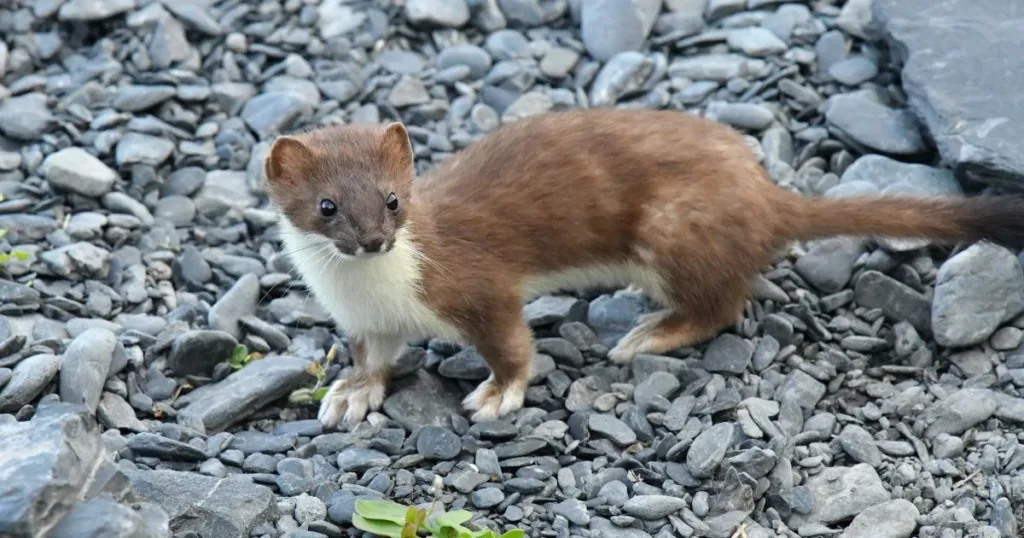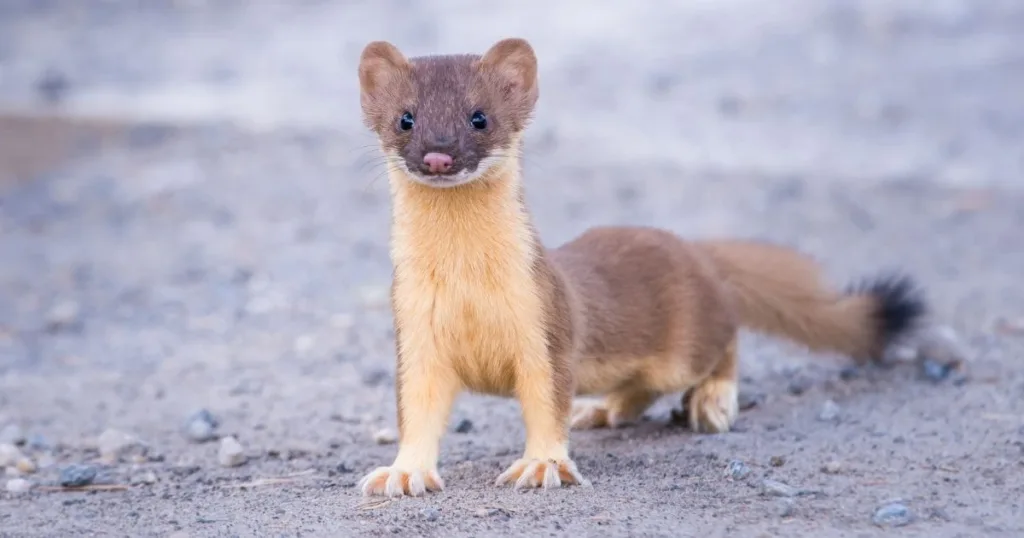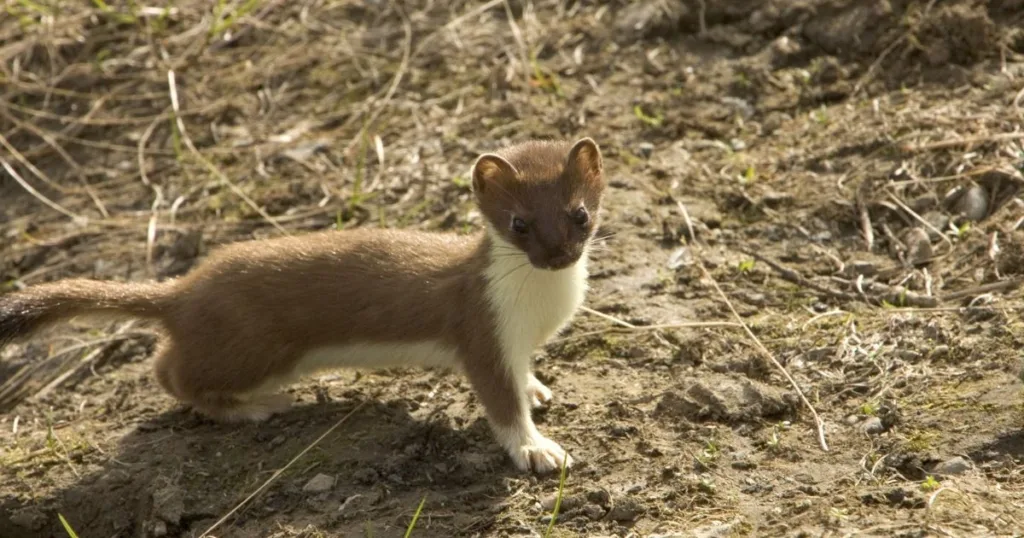
You may see intriguing signs of animal activity on the ground when exploring the outdoors, including weasel tracks. Weasel tracks are characterized by their unique shape, often featuring small, elongated footprints with four toes. These tracks can provide valuable insights into the habits and movements of these agile creatures.
Recognizing weasel tracks can enhance your understanding of the wildlife in your area. You might find them near fields, forests, or even your backyard, indicating that weasels are active and moving through these environments. Identifying these tracks can lead to a greater appreciation of local ecosystems and the roles these animals play.
Identifying weasel tracks gives you knowledge and a sense of connection to nature. This understanding can enrich your outdoor experiences, making each trek a chance to observe and appreciate the wildlife that shares your surroundings.

Identifying weasel tracks requires attention to detail. You'll notice specific characteristics that set these footprints apart from other mammals.
Weasel tracks typically show small, elongated footprints measuring about 1.5 to 2.5 inches long. The footprints consist of four toes arranged in a semicircle and may have claw marks visible.
The track length to width ratio is essential; weasel footprints are narrow relative to their length. Look for the distinctive narrow, pointed shape of the foot, which helps to differentiate them from other animals.
The pattern of the tracks can be single, paired, or follow a series of zig-zags as the weasel moves swiftly. Weasel paws may not leave deep impressions unless the ground is exceptionally soft.
The differences become apparent when weasel tracks are compared to those of other animals, such as rodents. For example, ferret tracks with shorter toes are usually larger and more rounded.
Rodents exhibit smaller footprints with more distinct toe separation, often with less defined claws.
A helpful tip is to look for the size and shape of the track. Weasels also tend to have more varied track patterns due to their agile movement and hunting behavior, while other animals may have more repetitive, linear tracks.
These distinctions will enhance your ability to identify weasels in their natural habitat.

Weasel tracks provide valuable insights into these animals' behavior and habits. By studying their movement patterns and seasonal variations, you can better understand their daily lives and environmental interactions.
Weasels are agile creatures that exhibit distinct movement patterns. Their tracks often reveal a characteristic bounding gait, where their front paws land close together. This movement can indicate their exploration of narrow spaces or pursuit of prey.
When observing weasel tracks, pay attention to the habitat. Weasels prefer areas with dense vegetation, which provides shelter and hunting grounds. Tracks may be found near burrows or water sources, which are vital for their survival. You can identify tracks by their small size, typically around 1–2 inches in length, and a unique toe arrangement that distinguishes them from other animals.
The appearance of weasel tracks changes with the seasons. In winter, tracks may show more details due to snow coverage, allowing for more precise impressions of their paws. You might notice a single line of tracks indicating a travel path.
In contrast, tracks can be less pronounced during spring and summer due to firmer ground conditions. Weasels may also expand their range during these warmer months as food sources become more abundant. Recognizing these seasonal variations in weasel tracks helps you understand their behavior in different environments, adapting to resource availability and habitat changes.

To remove weasels from your property, identify signs of their presence. Look for weasel tracks and footprints in soft soil or snow. These tracks often show a series of small, staggered prints.
Weasels are attracted to easy meals. Secure your garbage bins and remove pet food from outdoor areas. Store birdseed and livestock feed in sealed containers.
Inspect your property for small openings where weasels could enter. Seal gaps around doors, windows, and foundations using steel mesh or caulk to prevent them from getting inside.
Humane traps can be effective. Place them in areas where you’ve noticed weasel tracks. Check traps regularly to avoid distress to captured animals.
Certain scents might deter weasels. Try using natural deterrents, such as predator urine or strong-smelling essential oils around the perimeter of your property.
If the problem persists, consider contacting a professional wildlife removal service. Critter Stop excels in humanely addressing wildlife issues. With a reputation for quality service, they provide practical solutions tailored to your needs.
Call Critter Stop at (214) 234-2616 for a free inspection. Their expertise in pest removal ensures a safe and efficient resolution for your wildlife concerns.
Understanding weasel tracks and footprints can provide valuable insights into their behavior and presence in your area. Here are some common questions regarding weasel tracks and what they reveal.
Weasel tracks indicate areas where they hunt, travel, or mark territory. You may find tracks leading to burrows or through dense vegetation, highlighting their foraging paths. Observing tracks can help you identify their preferred habitats and feeding habits.
Weasel footprints are small, with four toes and no visible claw marks, slightly larger than a mouse's. The shape is elongated and often shows a distinctive heel pad. Comparing the size and arrangement of tracks can help differentiate weasels from similar species like minks or ferrets.
Soil moisture levels affect track formation; damp conditions create clearer impressions. Snow or loose soil can also reveal details like toe alignment and depth. Weather conditions and surface texture contribute to how well tracks are preserved and visible.
Weasel paws are small and compact, allowing quick movements through tight spaces. Their flexible foot structure helps them navigate various terrains silently. This design increases their hunting efficiency, enabling them to pursue prey without being easily detected.
Experts use track patterns and measurements to estimate weasel populations and behaviors. Analyzing the frequency and location of tracks helps identify movement corridors and breeding areas. This data is crucial for understanding population dynamics and habitat use, allowing for informed conservation efforts.
Visit our Critter Library and learn more about our furry friends